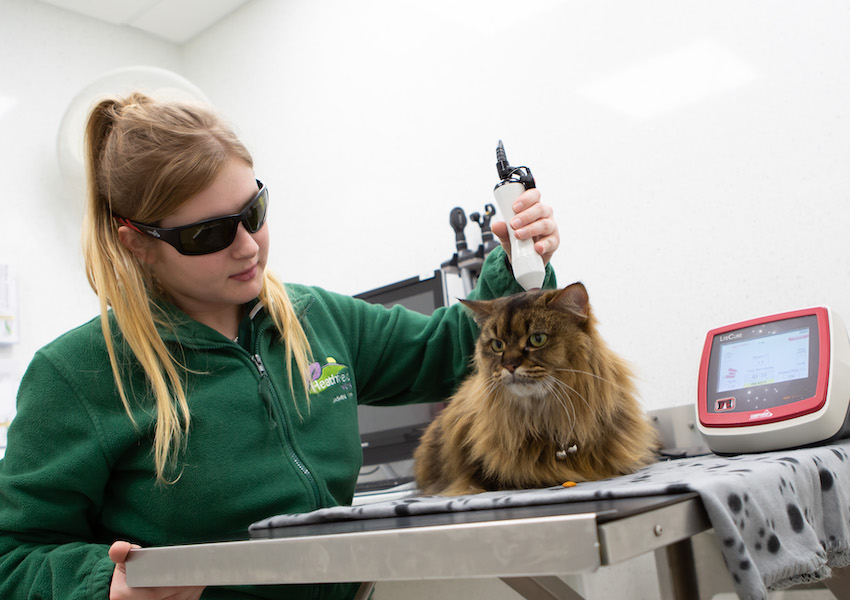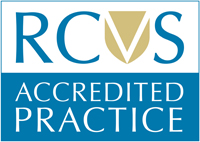
Laser therapy has been in use in medical circles since the 1970s, but it is only in the last few years, with the advent of the Mark IV version, that is has become possible to deeply penetrate tissues in a relatively short time, making it a practical proposition to treat animals. Before going ahead, several of our staff volunteered as guinea pigs and we were very impressed with the positive effects on our collection of aches and pains.
After two weeks of trials on a new range of patients (cats, dogs and ferrets!) with a variety of complaints, we purchased a Class IV deep tissue laser therapy unit. This offers a simple, non-invasive way of reducing pain and inflammation and accelerating healing via photo-bio-modulation.
The procedure is non-invasive, with no need to clip fur, restrain or sedate the patient and most find the experience pleasant and relaxing, willingly volunteering to sit or lie down for a few minutes of treatment. The only sensation felt during treatment is a soothing local warmth, and unlike many medicine-based therapies there are no side effects. The owner is encouraged to be present where possible and protective eye glasses are worn by all in the treatment room.
A small, hand held head is gently applied to the affected area and the beam of infrared laser light stimulates energy production within cells, leading to a cascade of beneficial effects including decreased inflammation, swelling, stiffness, muscle spasms and pain, as well as increased circulation. This creates an optimal healing environment, encouraging rapid restoration of function.
Acute conditions are treated until resolved, often needing only one or two sessions. Although improvement is often seen after the first visit (many patients seem more comfortable within 12 to 14 hours of laser treatment) most patients with a longstanding complaint, such as osteoarthritis, require several treatments for general benefit. This will be discussed during the initial consultation, but typically consists of 3 sessions during the first week, then 2 sessions during the second and the third weeks. Thereafter, periodic top up treatments may be required, with the condition of the patient dictating the interval.
We offer laser therapy as one of the treatment options for any suitable condition, including pain relief and rapid healing after surgical and dental procedures.
Conditions knows to respond to laser therapy
|
|
Call us on 01435 864422 if you have any questions about laser therapy and your pet.

